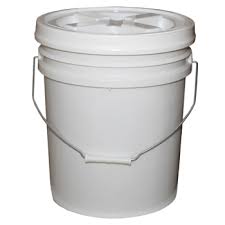Bulk Food Storage Containers
Bulk food storage containers are vital if you buy food in large quantities, or just want to make sure you have some staples in the event of a catastrophe. To keep your stash safe and usable, you need to use the right container for the items you are storing. The first requirement for any food storage unit is that it must be airtight. Most molds and fungus attack foods in storage by entering through covers that are not properly sealed.
Types of Bulk Food Storage Containers

For storing lots of food, the type of containers used will depend on the type of food, the quantity and the environmental conditions under which the food will be stored. The climate of the area also plays a significant role in storing foods for long periods. As much as possible, use containers that light cannot pass through. Minimizing the amount of light that reaches containers makes it less likely for your foodstuff to go bad. Three common containers people use to keep foodstuff for long periods are:
- Plastic buckets: Five-gallon buckets are ideal for rice, flour, beans and peas.
- Glass jars: Apart from peas and beans, these containers are great for some cereal grains and fruits and vegetables.
- Metal Bins: When the seal is airtight, these can be useful as bulk storage for some grains and beans and peas.
Types of Storage Areas
Ideally, a cellar is a good place in which to keep bulk food storage containers. In general, cellars tend to be dark and cool making them ideal for keeping many types of foods safe when you plan to store them for a long time. Unfortunately, this is not always possible, so sometimes it is necessary to find alternate storage areas.
Some people, if they have the space will build a pantry inside their kitchen for storing various edible items over the long term. In a disaster, having an adequate supply of food is always vital.
When you are using bulk food storage containers, some things to keep in mind are:
- Temperature: Regardless of the storage area, a temperature of around 70 degrees is best, however, the lower the temperature the longer the shelf life. However, it is important to note that fluctuating temperatures is a definite no-no as this will result in spoilage. The ideal range would be between 45 and 65 degrees Fahrenheit.
- Dark, cool areas are best for storing most types of food that you intend to keep for a while.
- Put a plan in place to ensure that you rotate food so that the older sets are the first that you use. This will help you to avoid having foodstuff go beyond the expiry date, at which point it might not be safe to consume it.
- Always keep in mind disaster preparedness when storing foods even if you do not live in areas that are prone to tornadoes, earthquakes and hurricanes. Storing food close to pipes can lead to problems if a line is broken. It is also best to avoid stacking containers too high to keep them from toppling over.
- Never store containers directly on the floor, especially if the area is where flooding can occur. In addition, some types of flooring are prone to variations in temperature.
- Place bay leaves in containers with grains to help absorb moisture.
Avoid Chewable Containers
Having to throw away a lot of food due to improper use of bulk food storage containers and storage areas can prove to be expensive. During a shortage, this could also leave you and your family without enough to eat. Make sure that you use only containers that are approved for storing foodstuff long term.
Sacks and paper bags are not good ways to store your bulk purchases. Not only will the bags deteriorate quickly, they are more likely to absorb moisture and show signs of damage. Additionally, there’s nothing so disheartening as picking up a bag of beans or rice, only to have the contents slide out the bottom, mixed with ample evidence of rodents.
Depending on your family’s size, you can determine how large the containers can be. Standard 5-gallon buckets and one gallon glass containers are good buys for most households. Of course, the lids and covers must be of good quality and should allow the containers to be airtight when you close them.
Return from Bulk Food Storage Containers to DIY Survival Food





New! Comments
Have your say about what you just read! Leave me a comment in the box below.